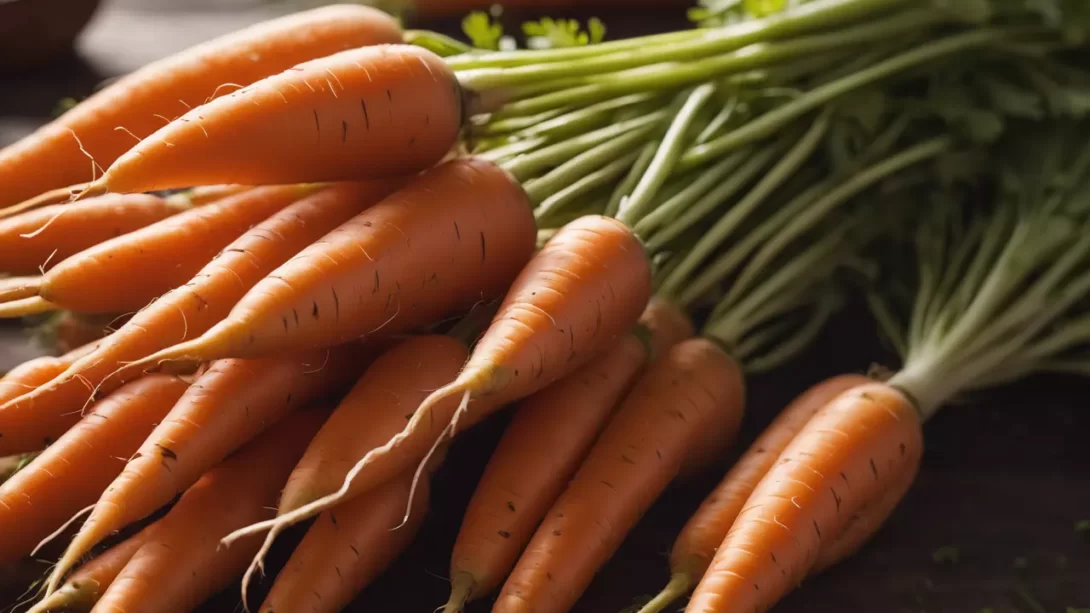Carrots, with their vibrant orange hue and crisp texture, are a familiar sight in grocery stores and kitchens around the world. Commonly perceived as a natural vegetable, the history and development of carrots are more complex than they appear. This article delves into the origins and evolution of carrots to explore whether they can be considered “man-made.”
Historical Origins of Carrots
The story of the carrot begins with its wild ancestor, Daucus carota, a plant native to various parts of Europe and southwestern Asia. The wild carrot is quite different from the carrot we know today, both in appearance and taste.
- Wild Carrots: Initially, wild carrots were small, forked, and pale in color, with a woody and bitter flavor. They were used primarily for medicinal purposes rather than as food.
- First Cultivation: Historical evidence suggests that carrots were first cultivated in the region around present-day Afghanistan thousands of years ago. These early domesticated carrots were primarily purple and yellow, not the orange we’re familiar with today.
The Evolution of Carrots Through Selective Breeding
The transformation of the carrot into the vegetable we recognize now is largely due to selective breeding, a process through which humans have cultivated plants with desirable traits over generations.
- Selective Breeding and Diversification: Over centuries, through the practice of selective breeding, farmers chose and propagated carrot plants with specific desirable characteristics, such as a sweeter taste, more palatable texture, and larger size.
- Development of the Modern Carrot: The familiar orange carrot, as we know it, is believed to have emerged in the 16th and 17th centuries in Europe, particularly in the Netherlands. This development is attributed to selective breeding for improved flavor, texture, and a vibrant orange color, which may have been encouraged due to the orange color being associated with the Dutch Royal Family.
Early Varieties of Carrots
The history of carrot cultivation is marked by a wide variety of shapes and colors:
- Diversity in Early Carrot Varieties: Historical records and paintings show that early cultivated carrots came in a range of colors including purple, white, red, and yellow. The shape and size also varied significantly from the modern carrot.
- Influence of Early Cultivation Practices: The diversity in early carrot varieties showcases the impact of cultivation practices and local preferences on the evolution of the vegetable.
The Role of Human Intervention in Carrot Development
Human cultivation and selective breeding have played pivotal roles in shaping the evolution of the carrot. This process of domestication has transformed the carrot from its wild form into the vegetable we enjoy today.
- Selective Breeding Over Centuries: Through the ages, farmers have continuously selected carrots with favorable traits. This process has been based on natural genetic variation within the carrot population, gradually leading to the enhancement of desired characteristics.
- Man-Made vs. Natural: The term “man-made” might suggest artificial creation, but in the context of carrots, it refers to the significant influence of human cultivation practices over time. The carrot we eat today, while different from its wild ancestor, is a product of an age-old natural process guided by human hands.
Genetic Modification and Modern Carrots
Advancements in agricultural technology have brought new methods of plant breeding, including genetic modification. However, it’s important to distinguish this from the traditional selective breeding that shaped the development of carrots.
- Traditional Breeding vs. Genetic Modification: Unlike traditional breeding, genetic modification involves directly altering the genetic makeup of a plant in a laboratory. To date, the common carrot varieties grown and consumed are not genetically modified organisms (GMOs); they are the result of traditional selective breeding techniques.
- Role of Modern Agriculture: Modern agricultural practices have further refined carrot cultivation, focusing on aspects like disease resistance, shelf life, and yield. However, these advancements are built upon the foundation laid by centuries of selective breeding.
Nutritional Aspects and Health Benefits of Carrots
The nutritional profile of carrots has also been influenced by their cultivation history. Modern carrots are not only tastier but also packed with nutrients.
- Enhanced Nutritional Value: Today’s carrots are rich in vitamins, minerals, and antioxidants. The selective breeding process has inadvertently increased their nutritional value, particularly in terms of beta-carotene, the compound that gives carrots their orange color and is a precursor to vitamin A.
- Health Benefits: The high nutrient content in carrots is linked to numerous health benefits, including improved vision, reduced risk of chronic diseases, and enhanced immune function.
Conclusion
The journey of the carrot from a wild root to a beloved vegetable staple is a fascinating example of how human intervention has intertwined with natural processes. The carrot we know today, with its sweet flavor, crunchy texture, and vibrant orange color, is a testament to centuries of selective breeding and cultivation by farmers around the world.
The term “man-made” in the context of carrots refers to the significant role that human cultivation practices have played in their development. While modern carrots have been shaped by human hands, they are not artificial creations; they are the result of enhancing natural genetic diversity through selective breeding. This process has allowed us to turn a once wild and bitter root into a nutritious and flavorful vegetable.
In the realm of modern agriculture, while techniques have advanced, the fundamental practice of selecting and propagating plants with desirable traits continues. The carrots we enjoy today are richer in nutrients and more diverse in varieties, thanks to the efforts of generations of farmers.
In summary, the evolution of the carrot is a prime example of how agriculture and selective breeding have transformed a plant to meet human needs and preferences. This journey reflects not just a change in the physical characteristics of the carrot but also highlights our enduring relationship with the natural world. By understanding this relationship, we gain a deeper appreciation for the foods we consume and the processes that bring them to our tables. Carrots, in their colorful and nutritious glory, remind us of the remarkable capabilities of both nature and human ingenuity.



